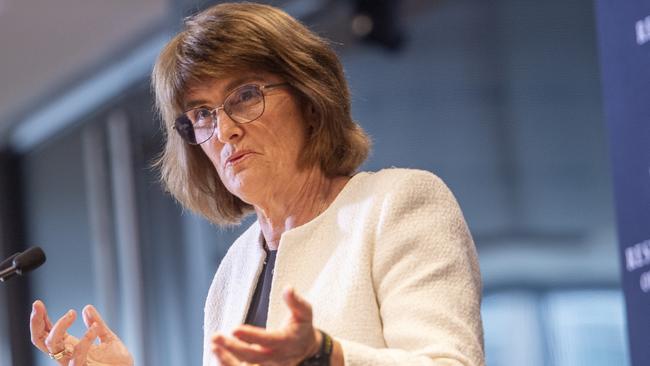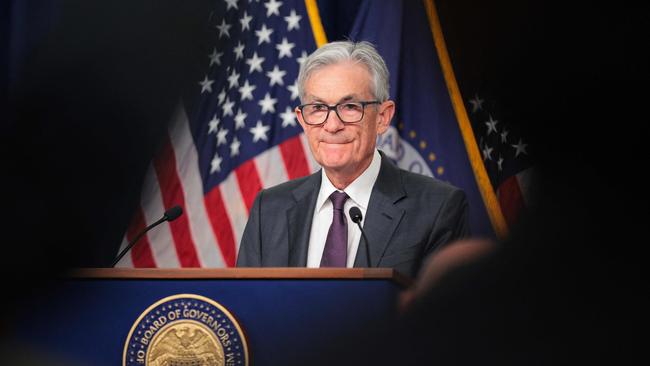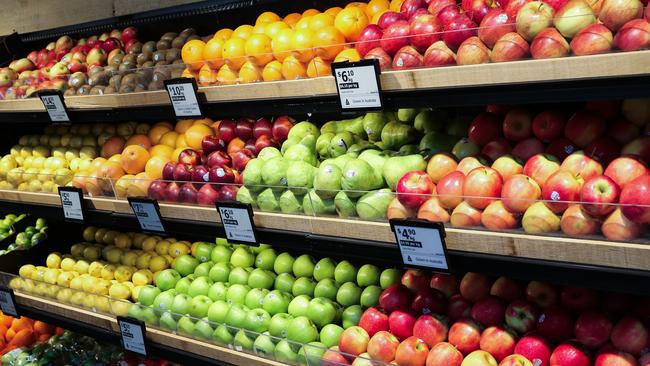
Powell is holding firm and even hinting of rate increases, but the lower interest rate ambush on Bullock, Hauser and the Reserve Bank board is much better organised, and it is likely they will succumb.
But every Reserve Bank director will know that Powell’s refusal to be ambushed makes lowering rates in Australia a high-risk strategy. And that risk is multiplied by the danger that the impact of US tariffs on China will lower the Australian dollar, so inflaming our inflation.
And the risks skyrocketed when the dollar slumped below US62c in reaction to the tariff wars. This will push Australian inflation higher.
These warnings are likely to be overridden by the well-publicised pain being experienced among mortgage voters and a range of enterprises led by those in the building, hospitality and clothing retailing industries.
The bank economists and media commentators are even forecasting further rate reductions. But once the election is over further interest rate reductions will require a reduction in the real underlying inflation rates and no further falls in the Australian dollar.
In the US the ambush was simple. President Donald Trump made it very clear that he wants the Federal Reserve to lower rates because he is lowering costs via his energy policies, lower company and individual taxes and better productivity. And he wants the Federal Reserve to ignore tariffs, which are akin to a GST.
There was also a threat that Jerome Powell might lose his position as chair of the Federal Reserve if he doesn’t listen to the President.

The equivalent Australian ambush of the central bank is much better co-ordinated.
The Treasurer and Prime Minister are advocating interest rate reductions and their thrust is being backed by economists from all the major banks and most commentators.
Naturally lowering of interest rates will greatly assist banks, those under mortgage stress and increase the chances of an ALP win at the upcoming election.
It is rare for the Reserve Bank to make a decision that goes against such a united public front so there is a high likelihood of lower rates.
Nevertheless, join me in a totally hypothetical sneak preview as to what might take place in the Reserve Bank boardroom.
Those directors who look beyond the rate ambush will point to six dangerous forces this could be unleashed if they lower rates at this point:
â—Â The high real rates of inflation. Here I have asked a leading non-bank economist, IFM Investors’ Alex Joiner, to take me through some of the real inflation figures that will be placed on the Reserve Bank board table. The comments are mine.
â—Â The recent fall in the Australian dollar, which will boost the costs of imports by about 10 per cent in the current half-year. Those costs will probably be passed on.
â—Â The Reserve Bank does not control the Australian dollar and once global economists look beyond the surface CPI manifestations, a lower rate multiplies the risk of our currency falling, creating more cost rises. The Trump China tariffs are an additional threat.
â—Â Currently the government subsidies are reducing power prices by 20 to 25 per cent. Not only will that need to be maintained but it must be increased substantially to cover future power price rises as the government’s high-cost energy program is rolled out.
â—Â The likelihood of further falls in Australian productivity while wage costs rise.
â—Â Our low unemployment and buying strength in the six months to November 30 delivered the strongest sales we have seen over the past decade, excluding the pandemic.
The headline inflation rate of 2.4 per cent falls within the Reserve Bank’s target range of 2-3 per cent. All central banks use various methods to smooth out isolated events. We have a method used by few other countries, the trimmed mean.
We smooth out items that are showing the biggest variations. So in the latest quarter we smoothed out heavily subsidised falls like power, public transport and childcare. We smoothed big rises in areas like housing and services. The trimmed statistical calculation produced a 3.2 per cent annual increase.
Most central banks use a different system. They take out of their CPI food and energy because these are items that vary greatly and are not influenced by interest rates.
Using this system the Australian inflation rate is 3.6 per cent, compared to only 2.8 per cent in the US.

The US also has a measure which isolates all those costs that are likely to be influenced by interest rates. On that basis our inflation rate is 4 per cent.
On accepted global measures we still have an underlying inflation problem so we are not in automatic interest rate reduction territory.
But almost certainly Treasury Secretary Steven Kennedy will have none of these overseas calculations and will back his Treasurer and focus on the headline CPI of 2.4 per cent and the trimmed mean of 3.2 per cent – in touch with the Reserve Bank’s target of 2-3 per cent.
But someone on the board will have the courage to raise with Kennedy his statement to Senate Estimates, linking labour productivity with acceptable wage rises.
In the September national accounts annual productivity was minus 0.8 per cent. Using Kennedy’s wages/productivity rule of thumb, that would require wage rises being restrained to 1.7 per cent.
Instead, wage growth was about twice that level. Big wage growth with negative productivity is a disaster for long-term inflation.
Blame for future productivity falls lies squarely on the shoulders of both Treasurer Jim Chalmers and Kennedy, who remained mute when the government passed 700 pages of industrial relations legislation.
Commonwealth and state governments have gone on hiring blitzes without any consideration of productivity gains.
A vast quantity of Australian goods are imported in US dollars. The 8 per cent fall in the Australian dollar in the final months of 2024 did not affect prices in 2024 but certainly will in 2025.
Most enterprises have absorbed labour, power and other cost rises so will have no choice but to pass on the currency cost and most will add a margin: imported goods will rise in the vicinity of 10 per cent once currency hedges expire.




The US Federal Reserve’s Jerome Powell and the Australian Reserve Bank’s Michele Bullock and Andrew Hauser are being ambushed in an unprecedented drive to lower interest rates.